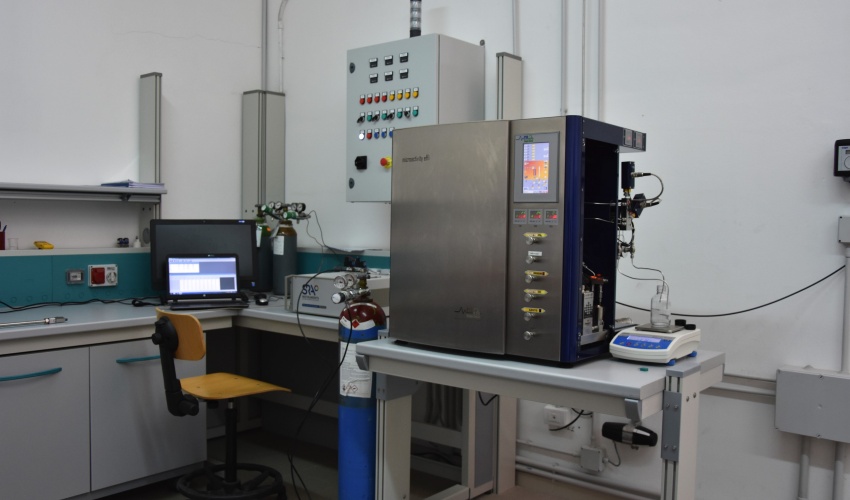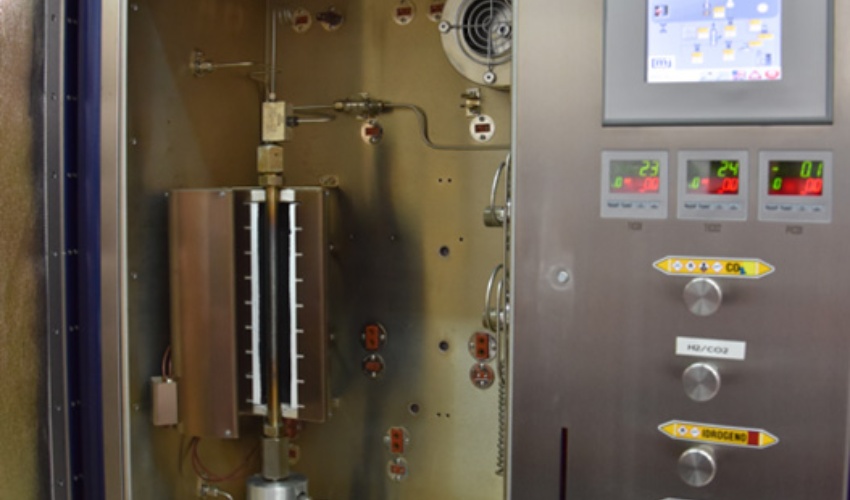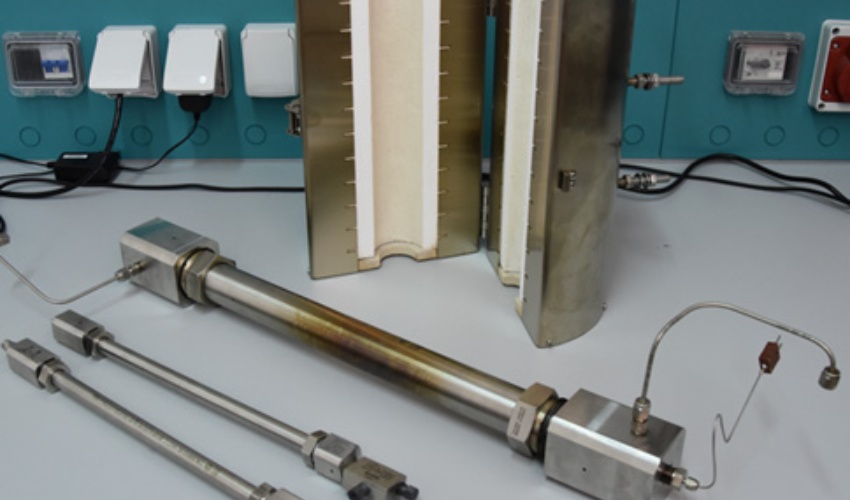Carbon to Fuel system for catalytic conversion of CO2 to liquid and gaseous fuels
The Carbon to Fuel system allows the testing of processes for the production of liquid and gaseous fuels from carbon dioxide, hydrogen and syngas.
The Carbon to Fuel system was developed to test processes for the production of liquid and gaseous fuels from CO2 (captured) and hydrogen (from renewable sources), but also from syngas obtained from coal and/or biomass gasification processes.
The heart of the system is the catalytic reactor which, through the reaction between gaseous reagents under specific operative conditions, can produce methanol and/or dimethyl ether, which can be utilized directly as fuels or as reagents for other chemical processes.
The system can also be utilized for the characterization and the preliminary screening of certain types of catalysts.
The synthesis section consists of a reagent gas supply and mixing area, the catalytic reactor and the gas and liquid product collection area.
The feeding section currently consists of independent lines through which the gaseous reagents are sent to the reactor: these can be mixed appropriately according to experimental requirements.
The reaction unit is located within a closed hot-box in which two types of reactors with different internal diameters, one with 9.1 mm the other with 23.8 mm, can be used.
The reactor can work up to a pressure of 100 bar with a maximum temperature of 700°C.
The exit zone of the hot-box consists of the collection and separation area of reaction products (gas phase and liquid phase).
Sotacarbo’s research is focused specifically on the development of catalysts that, using innovative preparation methods and advanced materials, lead to particularly significant performances.
Both supported and unsupported high surface development nanostructured catalysts are synthesized and characterized in Sotacarbo laboratories.
The active phases constituting the catalysts are copper, zinc oxide and zirconia based.
The experiments carried out so far have been mainly focused on liquid and gaseous fuels production, such as methanol and dimethyl ether from CO2 and hydrogen.
The former is considered the energy vector par excellence and is characterized by a constantly expanding international market, being moreover a precursor to countless chemical compounds.
Dimethyl ether, on the other hand, is considered an excellent fuel both for domestic applications (as a substitute for LPG) and for use in diesel engines.
But the system can also process syngas obtained from carbon and/or biomass gasification: this is possible integrating the system with a bench-scale fluidized bed gasifier, installed in the same laboratory.
Gas products produced by the gasification system can serve as feed to the catalytic reactor, once cleaned, again for the production of liquid or gaseous fuels.
This is also made possible by a system that compresses the gasification gas products to the desired pressure before being inserted into the reactor unit.
Reaction process analysis is conducted with the aid of a gas chromatograph equipped with a dual-column system, connected to a flame ionization detector (FID, for carbon containing compounds) and a thermal conductivity detector (TCD, for permanent gases).
Possible offline analyses can then be conducted through an additional offline gas chromatograph coupled with a mass spectrometer.
This way, it is possible to know the effectiveness of gaseous reagents conversion into liquid products, while assessing any traces of unwanted products due to secondary or unwanted reactions.



